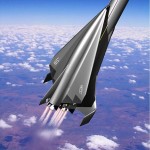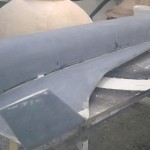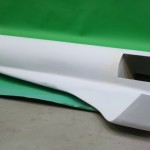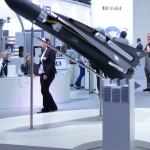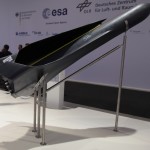Display Model of Tractor Mechanical Components
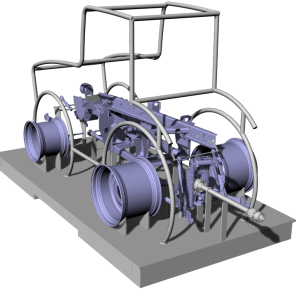
ACCENTform was commissioned by the GKN Company to make a tractor model at the 1:2 scale for the Agritechnica trade fair in Hanover. The model represented the company’s diverse products ranging from a drive system, to a tractor wheel, and included the driveshaft, at one of the world’s biggest agricultural fairs. The special feature of this project was the use of the unusually varied number of different manufacturing processes.
Using the manufacturing process “Rapid prototyping”, the original 3D data sets were scaled to the required size and divided so that they could be milled in polyamide with a 3D printer. Here, it produced more than 120 3D printing parts. These parts were subsequently glued together to be the drive shafts, clutches, multi-disc brakes, and the complete drive system. For the modules, the 3D printer made the fibreglass wheels, which were supported in the mold and model-making by our machining centre. The Plexiglas frame and chassis of the tractor model were designed by our design team, before being nested and passed on to an external company for laser cutting and bending.
The tubular frame, which represents the outline of the tractor, was first designed as a 3D CAD model and using the CNC pipe-bending machine, were bent and welded into shape. Finally, over 400 items were installed for this project.

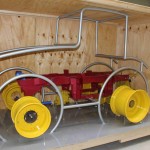



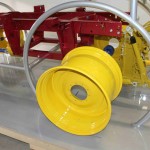
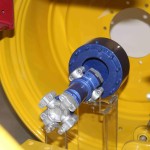
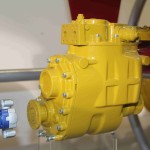

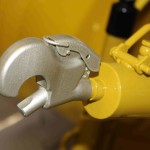

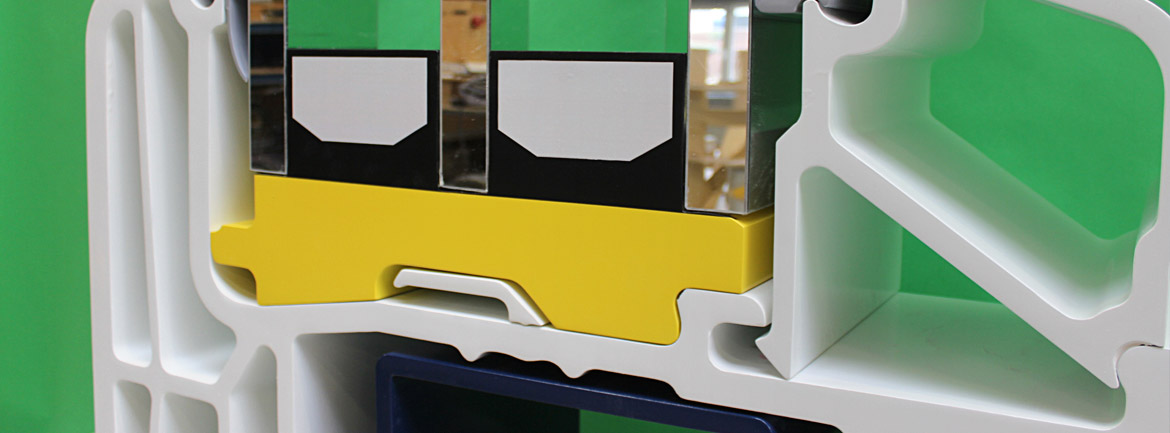
 For the Fensterbau Frontale 2014 trade show, ACCENTFORM produced oversized, approx. 2m high models of a window-frame-sash combination by mid-March 3 2014. We milled the individual details (frames, seals, reinforcements) in Obomodulan 160. The individual parts were sealed, filled and prepared for painting. The customer chose different paint to represent the details. After successful painting, ACCENTFORM joined the details as in the original. The window profiles were placed on the bases provided on site.
For the Fensterbau Frontale 2014 trade show, ACCENTFORM produced oversized, approx. 2m high models of a window-frame-sash combination by mid-March 3 2014. We milled the individual details (frames, seals, reinforcements) in Obomodulan 160. The individual parts were sealed, filled and prepared for painting. The customer chose different paint to represent the details. After successful painting, ACCENTFORM joined the details as in the original. The window profiles were placed on the bases provided on site.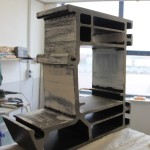
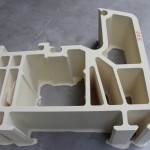

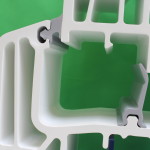
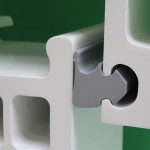

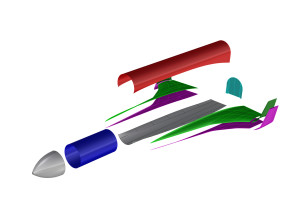
 The vision is tempting – board the plane in Europe, lean back and disembark after just 90 minutes on the other side of the world in Australia. But before the SpaceLiner, which is being developed by the Institute of Space Systems at the German Aerospace Center (DLR), can fly this route for the first time, new technologies still have to be tested and the framework conditions defined.
The vision is tempting – board the plane in Europe, lean back and disembark after just 90 minutes on the other side of the world in Australia. But before the SpaceLiner, which is being developed by the Institute of Space Systems at the German Aerospace Center (DLR), can fly this route for the first time, new technologies still have to be tested and the framework conditions defined.